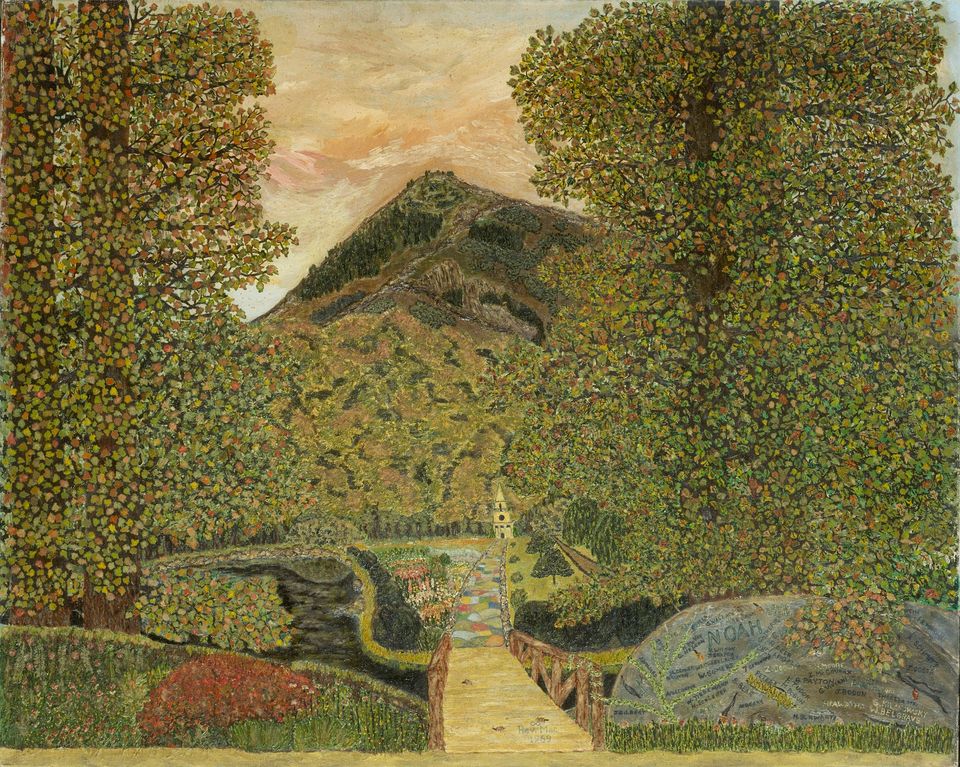
Chapel in the Fall Wood, Maceptaw Bogun
Summary by Ali Sims, Pre-program Intern
In this talk we heard from Desi Peters, a fourth year graduate student at the Conservation Center, Institute of Fine Arts, NYU, who is currently completing her graduate internship at the Smithsonian American Art Museum’s Lunder Center. She discussed her work on a painting entitled “Chapel in the Fall Wood” by self-taught painter Maceptaw Bogun.
Born to Polish immigrants living in New York City, Bogun did not begin to paint until he was 50, at which point he was drawn to the medium as a means of religious expression. “Chapel” is a landscape painted in mixed media on canvas, completed in 1969, and is currently part of the American Art Museum’s “Folk and Self-Taught Art” collection. Peters has been working on this piece for some time, cleaning surface grime and correcting some areas of flaking paint with Beva, and has found that “Chapel” presents some unique treatment challenges. The first that she discussed is Bogun’s use of thick, selectively placed impasto in which multiple fibers were embedded, including “collections of long, wispy fibers… long fibers that are soaked in paint but not completely embedded, [and] short superficial fibers.” The origin of the fibers is unclear, as they may have been intentionally placed or may be by-products from a messy studio.
By far the most interesting treatment consideration, however, is Bogun’s use of phosphorescent paint to create an alternate nightscape which reveals the moon and stars, a star adorning the top of the chapel steeple, and the names of family, friends, and people of historical note when viewed under UV radiation. A significant part of Peters’ analysis of the painting has involved determining the type of phosphorescent paint used, and whether it was specifically phosphorescent or fluorescent material. She briefly discussed difference of the two types of emission, explaining that among other distinguishing characteristics, phosphorescent material continues to emit light after the source of energy is removed, whereas fluorescent material does not. XRF analysis has revealed the presence of Zinc and Strontium, which could indicate zinc sulfide or strontium aluminate, two of the most common pigments in phosphorescent paint. Her current belief is that because the zinc is present throughout the work, it is most likely a component of paint underneath the phosphorescent paint, while the strontium may indicate the phosphorescent pigment, since it is present only in the areas of phosphorescence. The treatment of the work is ongoing, and will hopefully include experiments to distinguish the two pigments based on their afterglow duration. Peters’ discussion of her analysis and treatment of Bogun’s “Chapel in the Fall Wood” was certainly (excuse the pun) an illuminating experience.